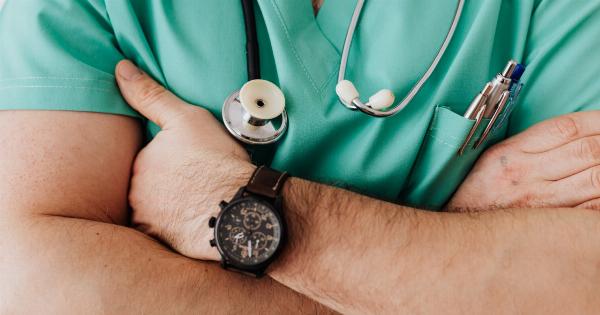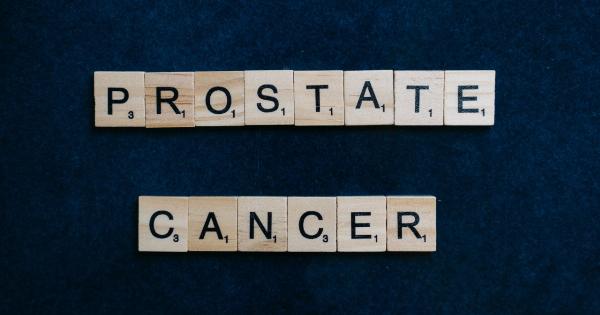Gynecomastia is a medical condition characterized by the enlargement of male breast tissue. This condition can cause a great deal of distress and embarrassment for those affected.
In this comprehensive guide, we will explore the causes, symptoms, diagnosis, and treatment options for gynecomastia.
What is Gynecomastia?
Gynecomastia, often referred to as “man boobs,” is a condition that causes swelling of the breast tissue in males. It is more common in newborns, adolescents, and older men. Gynecomastia can affect one or both breasts, sometimes unevenly.
While the condition itself is not physically harmful, it can have a significant psychological impact, leading to self-esteem issues and body image concerns.
Causes of Gynecomastia
There are several factors that can contribute to the development of gynecomastia:.
Hormonal Imbalance
One of the primary causes of gynecomastia is a hormonal imbalance, specifically an increase in estrogen levels relative to testosterone.
Estrogen is the hormone responsible for breast development, while testosterone is responsible for masculine characteristics. When the balance between these hormones is disrupted, it can result in the enlargement of breast tissue.
Puberty
Gynecomastia commonly occurs during puberty due to hormonal changes. It is estimated that up to 70% of boys experience some form of breast enlargement during this stage of development.
In most cases, the condition resolves on its own within a few months to a few years without requiring any treatment.
Medications
Certain medications can also cause gynecomastia as a side effect. These include medications used to treat prostate conditions, certain antidepressants, anti-anxiety medications, and some chemotherapy drugs.
If you suspect that your medication is causing gynecomastia, it is essential to consult your healthcare provider before making any changes.
Health Conditions
Some health conditions, such as liver failure, kidney disease, and hypogonadism (a condition where the body doesn’t produce enough testosterone), can contribute to the development of gynecomastia.
Diagnosing Gynecomastia
If you suspect you have gynecomastia, it is important to consult a healthcare professional for a proper diagnosis. The following steps may be involved in the diagnosis process:.
Medical History
Your healthcare provider will gather information about your medical history, including any medications you are currently taking and any existing health conditions.
Physical Examination
A physical examination will be conducted to assess the size and consistency of the breast tissue. The healthcare provider may also examine other areas of your body for signs of any underlying conditions causing gynecomastia.
Diagnostic Tests
To rule out any underlying health conditions, your healthcare provider may request additional diagnostic tests. These may include blood tests to check hormone levels, mammograms, ultrasounds, or tissue biopsies.
These tests will help determine the cause and severity of gynecomastia.
Treatment Options
The treatment options for gynecomastia depend on the underlying cause and the severity of the condition:.
Observation
For cases related to puberty or hormonal imbalances, it is common to take a “wait and watch” approach. Many cases of gynecomastia resolve on their own without any treatment.
Regular monitoring of the condition and periodic check-ups with a healthcare provider may be recommended.
Medication
In some cases, medication may be prescribed to treat gynecomastia. Hormone therapies, such as selective estrogen receptor modulators (SERMs) or aromatase inhibitors, can help restore the hormonal balance and reduce breast tissue enlargement.
However, these medications may have side effects and are typically only prescribed in severe or persistent cases.
Surgery
In cases where gynecomastia causes significant physical or psychological distress, surgical intervention may be recommended. The surgical procedures for gynecomastia include liposuction, mastectomy, or a combination of both.
These procedures aim to remove excess breast tissue and restore a more masculine chest contour.
Coping with Gynecomastia
Gynecomastia can take a toll on an individual’s self-confidence and psychological well-being. Here are a few tips for coping with gynecomastia:.
Seek Support
Find support from friends, family, or support groups who understand what you’re going through. Sharing your feelings and experiences can be therapeutic.
Dress Strategically
Choosing clothing styles that flatter your body shape can help boost your confidence. Opt for looser shirts or layers to minimize the appearance of your chest.
Practice Self-Care
Engage in activities that make you feel good about yourself. Exercise regularly, eat a healthy diet, and prioritize self-care to improve your overall well-being.
Conclusion
Gynecomastia is a condition that can have a significant impact on the lives of those affected. By understanding the causes, symptoms, and treatment options, individuals can make informed decisions and seek appropriate medical care.
Remember, you are not alone in your journey, and there is support available to help you cope with gynecomastia.





























